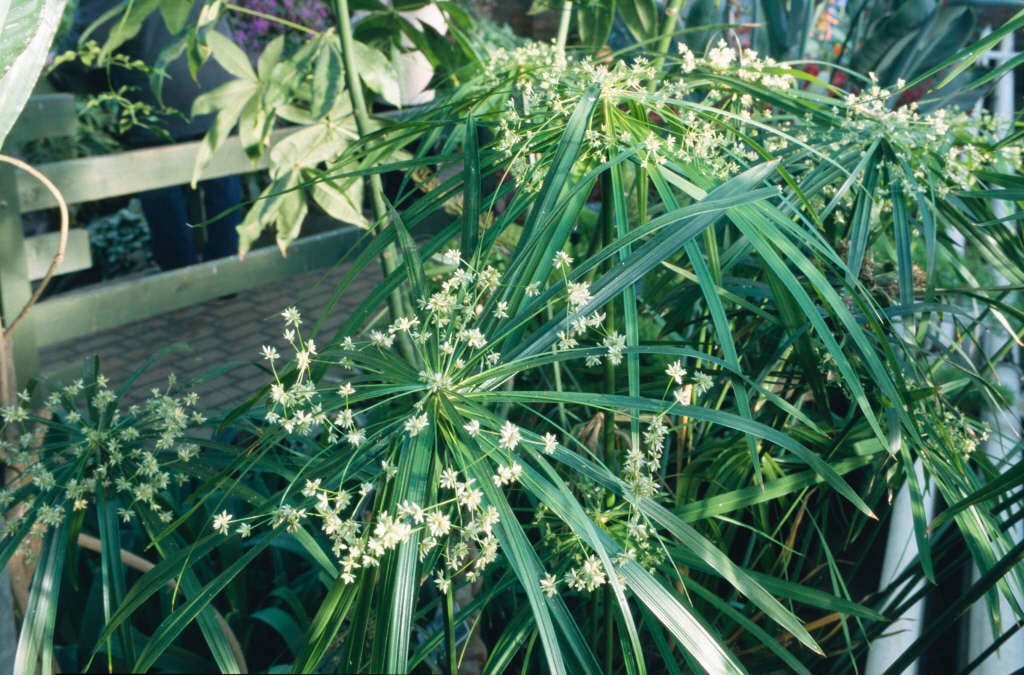Cyperus involucratus
umbrella plant
An evergreen perennial forming a clump of erect stems to 60cm, ending in a whorl of dark green, grassy leafy bracts; flowers insignificant, yellowish-green
Other common names
dwarf papyrus grassumbrella sedge
Synonyms
Cyperus involucratus 'Flabelliformis'Cyperus alternifolius subsp. flabelliformis
see moreCyperus alternifolius misapplied
Cyperus flabelliformis
Size
Ultimate height
0.5–1 metresTime to ultimate height
2–5 yearsUltimate spread
0.5–1 metresGrowing conditions
Moisture
Poorly–drainedpH
Acid, Alkaline, NeutralColour & scent
| Stem | Flower | Foliage | Fruit | |
| Spring | Green | |||
|---|---|---|---|---|
| Summer | Green | Green | ||
| Autumn | Green | |||
| Winter | Green |
Position
- Full sun
- Partial shade
Aspect
West–facing or South–facing or East–facing
Exposure
Sheltered Hardiness
H1CBotanical details
- Family
- Cyperaceae
- Native to GB / Ireland
- No
- Foliage
- Evergreen
- Habit
- Clump forming
- Genus
Cyperus can be annuals or evergreen, rhizomatous perennials, with linear, grass-like leaves and terminal clusters of small greenish flower-spikes with spreading leaf-like bracts beneath
- Name status
Correct
- Plant range
- Africa, Arabian Pen.
How to grow
Cultivation
Under glass grow in peat-free, loam-based potting compost in bright filtered light. Water freely in summer and maintain high humidity. Apply a balanced liquid fertiliser monthly. Can be grown outdoors as a bog or marginal plant
Propagation
Propagate by seed at 18 to 21°C in spring in constantly moist seed compost
Suggested planting locations and garden types
- Patio and container plants
- Low Maintenance
Pruning
Cut back dead material in autumn
Pests
Generally pest-free
Diseases
Generally disease-free
Get involved
The Royal Horticultural Society is the UK’s leading gardening charity. We aim to enrich everyone’s life through plants, and make the UK a greener and more beautiful place.

